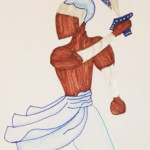 There are many nature-and-ancestor-based religions in the world, and Candomble is one of them. Candomble is an Afro-Brazilian religion that has its roots in Yoruba, which also gave rise to other religions, two of which are likely familiar to those who’ve studied alternative spiritual paths: Voodoo (from the word “Vodun”) and Santeria.
There are many nature-and-ancestor-based religions in the world, and Candomble is one of them. Candomble is an Afro-Brazilian religion that has its roots in Yoruba, which also gave rise to other religions, two of which are likely familiar to those who’ve studied alternative spiritual paths: Voodoo (from the word “Vodun”) and Santeria.
Who Are The Orishas?
The one thing these religions have in common is the group of nature deities called orishas, or “orixas,” as it would be written in Portuguese. Regardless of what you might have been led to believe, the orishas are not evil, nor are they entirely good. In fact, in Candomble, there is no real belief in the dualistic concept of “good” and “evil.” There is merely destiny and the requirement of the Candomble practitioner to fulfil their individual destiny as best as possible.
So if you’re unfamiliar with the orishas but love nature and want to get to know these beings, you’ll need to set aside the usual dualistic thinking many of us have been taught.
Overall, the orishas can be thought of as manifestations of the power of nature, thus can easily be called gods. In Brazil, Rio de Janeiro in particular, the two most well-known and revered orishas are Yemanja (aka Iemanja) and Ogum. Because Candomble practitioners had to hide their reverence for the orishas within Catholicism, Yemanja was often called “Black Mary,” though her name is Yoruban in origin, and it means “Mother whose children are like fish.” Yemanja rules the oceans and is also called “Goddess of the Sea” or “Lady In Blue.” Her day is New Year’s Eve.
Ogum is usually associated with St. George, and he is the God of Iron. His ritual day is the 23rd of April, and the entire day, known as “St. George Day,” is spent in festivals and parties, with “St. George and the Dragon” statues and figures everywhere. Ogum is also a warrior god, as well as the god of the hunt.
Another important orisha is Oxala. He is considered the most important of all the orishas as he is the father of them all. He’s known, therefore, as the white-robed king. Ruling birth and creativity, his element is air. He manifests in two forms: one is a handsome, youthful warrior and the other an old man.
Many other orishas exist—these are just three of them. But while some are leaders, that does not mean all of them are not powerful.
